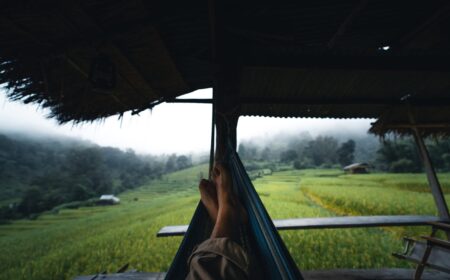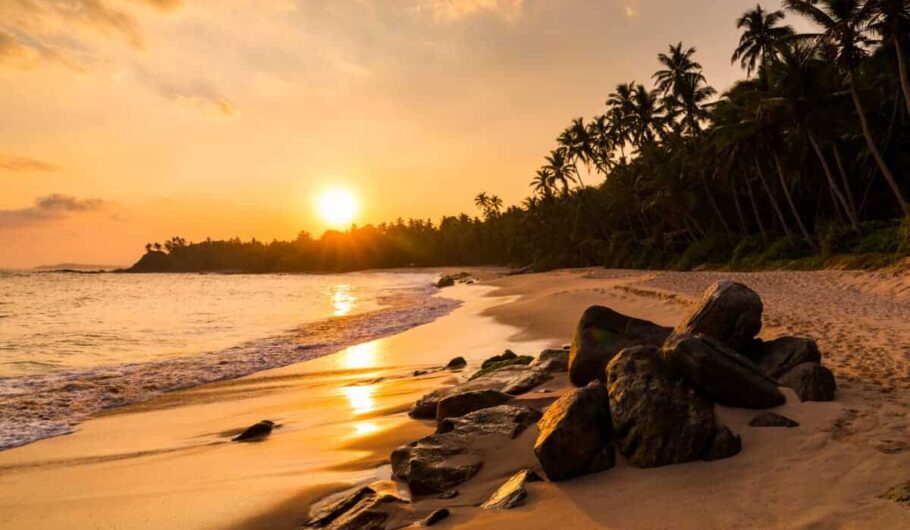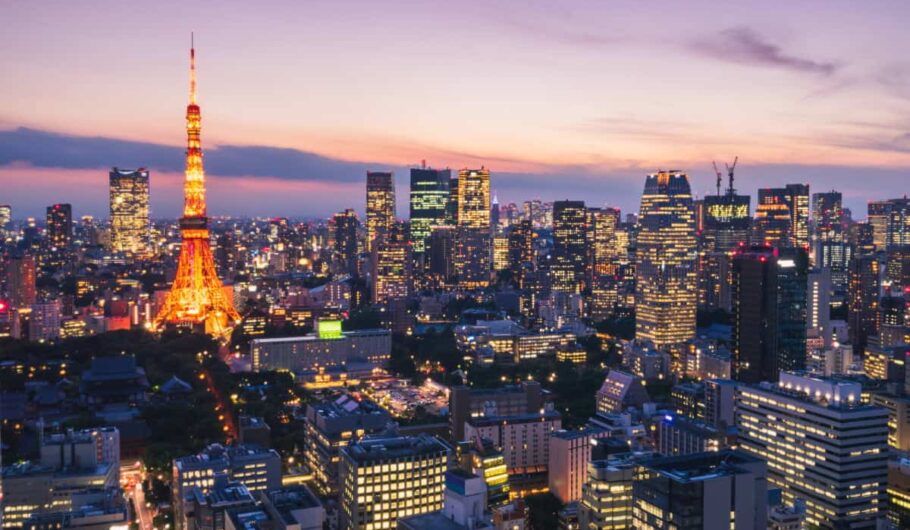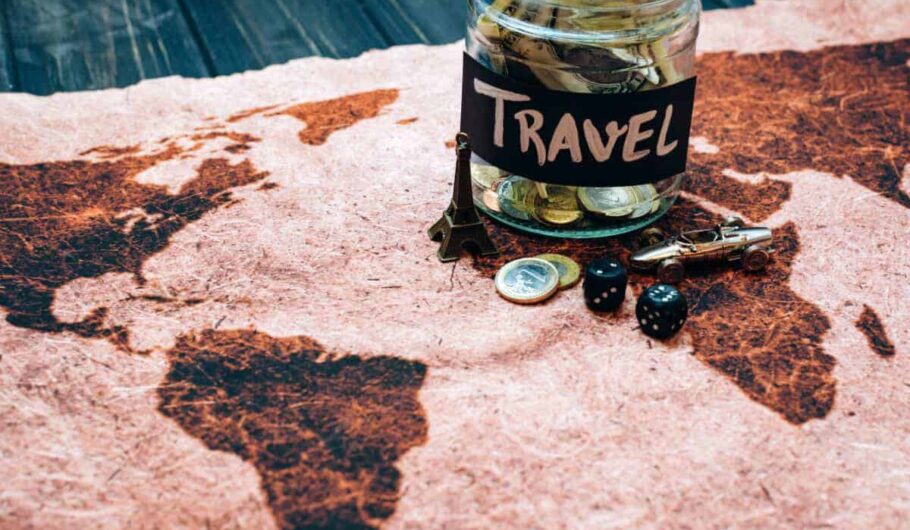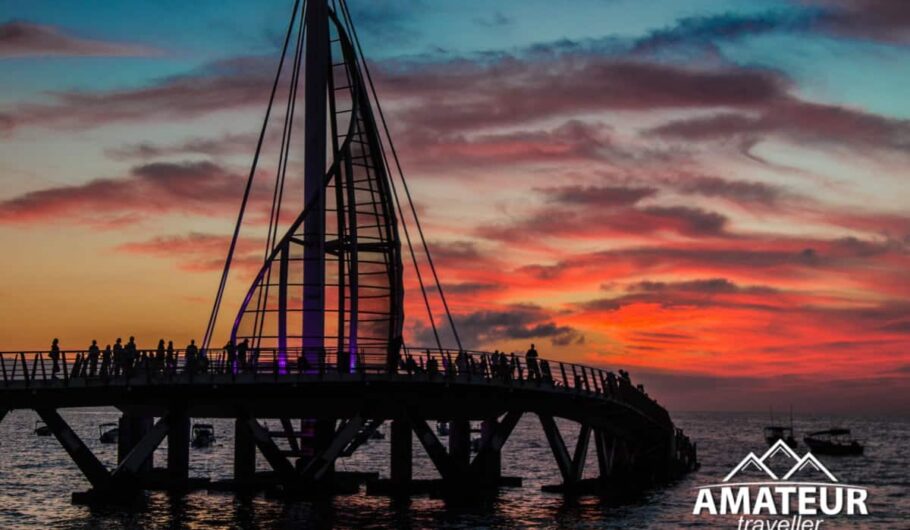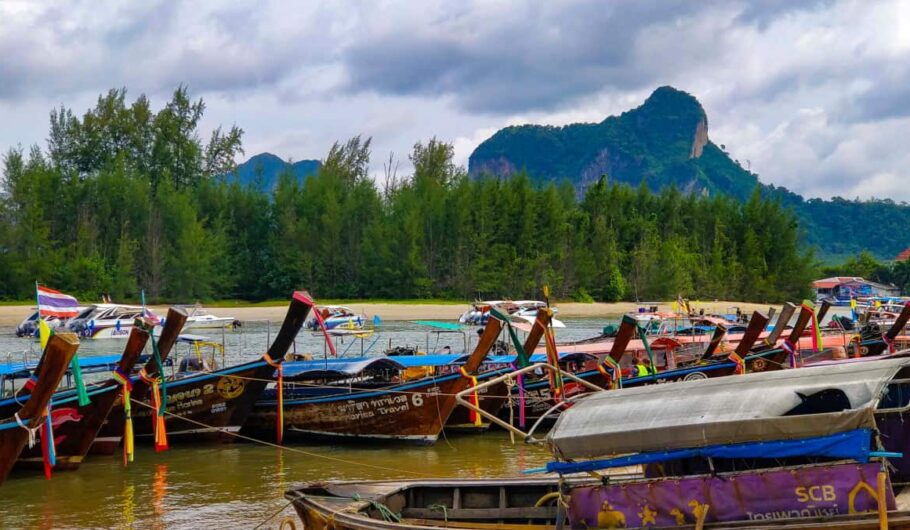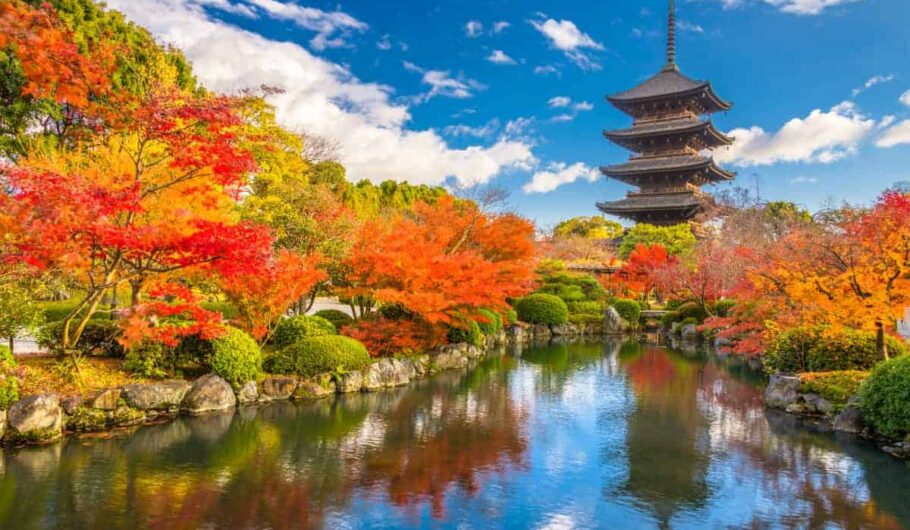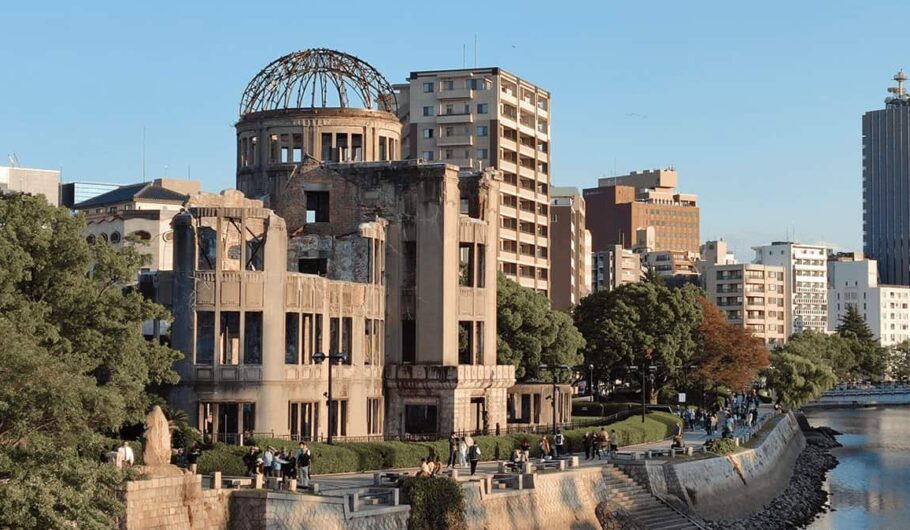10 Tips for Successful Travel
10 Essential Travel Tips for an Unforgettable Adventure
Traveling is one of life’s greatest joys—whether you’re escaping for a weekend getaway or embarking on a months-long journey, the thrill of exploring new places is unmatched. But to make the most of your trip, a little preparation goes a long way.
From packing hacks to cultural etiquette, these 10 essential travel tips will help you navigate your adventures smoothly, stay safe, and create unforgettable memories.
1. Plan Ahead (But Not Too Much)
A well-planned trip reduces stress, but over-planning can suck the fun out of spontaneity. Here’s how to strike the right balance:
- Research your destination – Look up must-see attractions, local events, and hidden gems. Websites like Lonely Planet and TripAdvisor offer great insights.
- Book essentials in advance – Flights and accommodations are often cheaper when booked early. Use tools like Skyscanner or Booking.com for deals.
- Leave room for flexibility – Some of the best travel moments happen unplanned. Keep a day or two open for unexpected discoveries.
Pro tip: Download offline maps (Google Maps allows this) in case you lose internet access.
2. Pack Light (Your Back Will Thank You)
Overpacking is a rookie mistake. A heavy suitcase can slow you down, cost extra in baggage fees, and make moving around a hassle. Here’s how to pack smart:
- Use the “5-4-3-2-1” rule:
- 5 tops
- 4 bottoms
- 3 pairs of shoes (max!)
- 2 dresses (if applicable)
- 1 jacket
- Roll, don’t fold – Rolling clothes saves space and minimizes wrinkles.
- Bring travel-sized toiletries – Or buy them at your destination.
- Pack a reusable water bottle – Saves money and reduces plastic waste.
Check out Packing Pro for a handy packing list app.
3. Learn Basic Local Phrases
Even a few words in the local language can make a big difference. It shows respect and helps you connect with people.
- Essential phrases to learn:
- Hello / Goodbye
- Thank you
- How much?
- Where is the bathroom?
- Help! (Just in case)
Apps like Duolingo or Google Translate (which works offline) can be lifesavers.
4. Stay Flexible (Because Things Will Go Wrong)
Flights get delayed. Weather changes. Attractions close unexpectedly. Instead of stressing, embrace the adventure!
- Have a backup plan – If a tour gets canceled, know what else you can do.
- Travel insurance is a must – Companies like World Nomads cover trip delays, lost luggage, and medical emergencies.
- Sometimes, getting lost leads to the best stories – Wander without a plan occasionally.
5. Prioritize Safety
No matter where you go, safety should always come first.
- Keep copies of important documents – Store digital copies of your passport, visa, and travel insurance in your email or cloud storage.
- Know emergency numbers – In Europe, it’s 112; in the U.S., it’s 911. Check your destination’s emergency contacts.
- Be aware of scams – Research common tourist scams in your destination (e.g., fake taxis, pickpocketing).
- Use a money belt or hidden pouch – Keeps cash and cards safe from pickpockets.
6. Respect Local Customs & Culture
Being a mindful traveler earns you respect and enriches your experience.
- Dress appropriately – Some religious sites require covered shoulders or knees.
- Ask before taking photos – Some cultures find it offensive.
- Learn dining etiquette – In Japan, don’t stick chopsticks upright in rice; in India, eat with your right hand.
Sites like Culture Trip offer great cultural guides.
7. Go Beyond Tourist Traps
The real magic happens when you step off the beaten path.
- Eat where locals eat – Avoid restaurants with giant “Tourist Menu” signs.
- Visit local markets – They’re full of authentic flavors and crafts.
- Take a cooking class or homestay – Platforms like EatWith connect travelers with local hosts.
8. Stay Connected (But Not Too Much)
While disconnecting can be refreshing, staying connected is practical.
- Get a local SIM card – Often cheaper than international roaming.
- Use WhatsApp or Skype – Free calls over Wi-Fi save money.
- But… limit screen time – Put the phone down and soak in the moment!
9. Embrace the Unexpected
Some of the best travel stories start with, “This wasn’t part of the plan!”
- Say yes to new experiences – Try that weird street food, join a local festival, or take a spontaneous road trip.
- Talk to strangers – Locals often know the best spots.
- Keep a travel journal – Jot down funny, scary, or heartwarming moments.
10. Travel Responsibly
Tourism impacts the environment and local communities—make sure it’s a positive one.
- Reduce plastic waste – Carry a reusable bottle and shopping bag.
- Support local businesses – Eat at family-run restaurants, buy handmade souvenirs.
- Respect wildlife – Avoid unethical animal encounters (e.g., riding elephants).
Check Sustainable Travel International for eco-friendly travel tips.
Final Thoughts
Travel is about discovery, growth, and connection. With these 10 essential tips, you’ll be ready to explore the world confidently, safely, and joyfully.
Now, where’s your next adventure taking you? 🌍✈️
Got a favorite travel tip? Share it in the comments below!
Happy travels! 😊
The World Awaits: Your Passport to 10 Unforgettable Destinations
Ah, travel! That magical itch to explore, to step beyond the familiar, and immerse ourselves in the breathtaking diversity our planet offers. It’s more than just ticking boxes; it’s about collecting experiences that reshape our perspective, stories that warm us for years, and connections – with places, cultures, and ourselves. The world truly is brimming with wonders, each corner whispering a unique invitation. But with so much beauty out there, where do you even begin? Fear not, fellow wanderer! Let’s embark on a virtual journey together to discover ten extraordinary places that consistently capture hearts and ignite imaginations. Forget bullet points; imagine we’re sitting down with a steaming cup of coffee (or perhaps a glass of Santorini Assyrtiko!), sharing tales of adventure.
1. Machu Picchu, Peru: Where the Andes Hold Ancient Secrets
Picture this: You’ve ascended winding paths or rattled along on a scenic train journey, the air growing crisper, the peaks more imposing. Then, often through a veil of morning mist that feels utterly mystical, it emerges. Machu Picchu. Perched impossibly high on a ridge amidst the verdant, cloud-piercing Andes, this lost city of the Incas isn’t just a ruin; it’s a profound testament to human ingenuity and a harmonious existence with nature. Walking amongst the precisely carved stone terraces, temples, and dwellings, you can’t help but feel the weight of history and the sheer audacity of its construction. Was it a royal estate? A sacred sanctuary? The mystery adds to its allure. The silence, broken only by the wind and perhaps the distant call of a bird, is profound. As the sun burns through the mist, revealing panoramic vistas of plunging valleys and soaring peaks, you understand why this architectural marvel isn’t just a destination; it’s a pilgrimage for history buffs and nature lovers alike, leaving you breathless in every sense of the word.
2. The Great Barrier Reef, Australia: A Technicolor Dream Beneath the Waves
Dive into another world entirely – a world of staggering color, intricate life, and ethereal beauty. The Great Barrier Reef isn’t just a reef; it’s the planet’s largest living structure, visible even from space, and a UNESCO World Heritage site of unparalleled significance. Imagine slipping beneath the turquoise surface of the Coral Sea into a realm where time seems to slow down. You’re surrounded by a mind-boggling kaleidoscope: coral formations in impossible shapes and hues – delicate fans, massive brain corals, vibrant staghorns – creating an underwater cityscape. Darting through this metropolis are fish of every conceivable color and pattern: tiny, electric-blue damselfish, majestic Maori wrasse with their distinctive “makeup,” graceful turtles gliding by, and if you’re lucky, the gentle, awe-inspiring presence of a reef shark. Snorkeling here feels like floating through a living aquarium, while diving takes you deeper into cathedral-like canyons and swim-throughs. It’s a visceral reminder of nature’s artistry and fragility, an experience that fills you with pure wonder and a deep sense of responsibility to protect this irreplaceable marine paradise.
3. Santorini, Greece: Sunsets, Sugar Cubes, and Aegean Bliss
Let’s trade the reef for the romance of the Cyclades. Santorini isn’t just a Greek island; it’s the postcard-perfect embodiment of Mediterranean dreams, sculpted by a cataclysmic volcanic eruption millennia ago. Clinging to the rim of the immense caldera, the iconic villages of Oia, Fira, and Imerovigli are a mesmerising cascade of dazzling white-washed buildings, their cobalt-blue domes mirroring the intense hues of the Aegean Sea far below. Wandering the narrow, winding cobblestone paths is pure delight – discover hidden churches, charming boutiques overflowing with local crafts, and inviting tavernas where the scent of grilled seafood and oregano fills the air. But the true magic unfolds as the day softens. Find a perch on a caldera-edge terrace, perhaps with a glass of the island’s crisp, distinctive Assyrtiko wine in hand. As the sun begins its descent, it paints the sky in an ever-evolving masterpiece of fiery oranges, deep pinks, and molten gold, finally dipping below the horizon in a moment of collective, breath-held silence often followed by spontaneous applause. Santorini’s beauty is dramatic, serene, and deeply romantic – a place where every view feels like a painting and the pace of life invites you to simply be.
4. The Serengeti, Tanzania: The Pulse of the Wild Under an Endless Sky
Now, prepare for a shift in scale and energy. The Serengeti National Park in Tanzania is the very definition of raw, untamed Africa. Its name, derived from the Maasai word “Siringet,” meaning “endless plains,” perfectly captures the vastness that stretches to the horizon – a sea of golden grasses dotted with acacia trees under an impossibly huge sky. This is the stage for the planet’s greatest wildlife spectacle: the Great Migration. Witnessing hundreds of thousands of wildebeest, zebra, and gazelle thunder across the plains in a relentless search for fresh grazing and water, braving crocodile-infested rivers, is a primal experience that stirs the soul. But the Serengeti’s magic isn’t limited to the migration. On game drives at dawn or dusk, you feel the thrill of the hunt as lions strategize, the quiet power of elephants moving through the bush, the graceful elegance of giraffes browsing the treetops, and the comical waddle of a warthog family. Sleeping in a tented camp under a blanket of stars, listening to the nocturnal symphony of the bush, connects you deeply to the ancient rhythm of life on Earth. It’s humbling, exhilarating, and utterly unforgettable.
5. The Taj Mahal, India: A Monument Etched in Marble and Love
Journey now to Agra, India, for a sight that transcends mere architecture. The Taj Mahal rises from the banks of the Yamuna River like a vision carved from moonbeams. Commissioned by the Mughal emperor Shah Jahan as a mausoleum for his beloved wife Mumtaz Mahal, this UNESCO World Heritage site is the ultimate symbol of love and loss, rendered in breathtaking artistry. Its perfect symmetry, the intricate pietra dura inlay work featuring semi-precious stones forming delicate floral patterns, the soaring white marble dome, and the graceful minarets create a sense of ethereal beauty. Seeing the Taj at different times of day is magical: pristine white under the midday sun, blushing pink at dawn, and taking on a mystical aura under moonlight. Walking through the grand gateway for that first glimpse, learning the poignant story behind its creation, and marvelling at the craftsmanship that took 20,000 artisans over 20 years to complete – it’s an encounter with sublime beauty and enduring emotion that leaves an indelible mark.
6. The Grand Canyon, USA: Earth’s Epic Masterpiece Unveiled
Nature’s patient power is laid bare in jaw-dropping grandeur at the Grand Canyon in Arizona. Carved relentlessly over millions of years by the mighty Colorado River, this isn’t just a canyon; it’s a geological autobiography etched across 277 miles, revealing layers of rock that tell a story almost two billion years old. The sheer scale is incomprehensible until you stand on the rim. The vast chasm plunges over a mile deep in places, stretching further than the eye can see, painted in striated hues of red, orange, gold, and purple that shift dramatically with the sunlight. You can feel incredibly small, yet profoundly connected to Earth’s immense history. Hike a trail (even just a short way down the Bright Angel or South Kaibab trails) to truly appreciate its depth. Take a scenic flight or helicopter tour for a bird’s-eye perspective of its serpentine curves. Or for the ultimate adventure, raft the churning rapids of the Colorado River itself, gazing up at the towering cliffs from the canyon floor. The Grand Canyon isn’t just scenery; it’s a visceral experience of time, power, and awe-inspiring beauty.
7. The Great Wall of China: A Dragon Coiling Across Mountains and History
Snaking its way over rugged mountains, dipping into valleys, and stretching an astonishing 13,000+ miles across northern China, the Great Wall is arguably humanity’s most ambitious and enduring physical achievement. It’s not one continuous wall, but a series of fortifications built and rebuilt over centuries, primarily during the Ming Dynasty, to protect against invasions. Standing atop a restored section like Mutianyu or Jinshanling, looking out at the wall winding endlessly over steep, forested peaks like a stone dragon, is an overwhelming experience. You can’t help but marvel at the sheer manpower, ingenuity, and determination it took to build it – brick by brick, stone by stone, often in incredibly harsh terrain. Walking along its ancient pathways, touching the weathered stone worn smooth by centuries of footsteps and weather, connects you viscerally to China’s long, complex, and fascinating history. The panoramic views of the surrounding countryside are simply breathtaking. It’s a powerful symbol of perseverance and a humbling reminder of what humans can accomplish.
8. The Pyramids of Giza, Egypt: Echoes of Pharaohs on the Sahara’s Edge
Step back millennia to the very dawn of monumental architecture. Rising from the sands on the Giza Plateau, just outside modern Cairo, the Pyramids of Giza stand as the last surviving wonder of the ancient world. Dominated by the colossal Great Pyramid of Khufu (Cheops), built from over 2.3 million limestone blocks, these structures were designed as eternal resting places for pharaohs, aligned with celestial precision. Seeing them in person, especially with the vast Sahara stretching behind them, defies expectations. Their scale is staggering, their geometry seemingly impossible for their time (c. 2580–2560 BC). Standing at the base, craning your neck to see the peak, or gazing upon them as the sun sets and the sound and light show begins, you feel the weight of ancient Egypt’s power, sophistication, and obsession with the afterlife. Guarding them stoically is the enigmatic Great Sphinx, adding another layer of mystery. Exploring the nearby tombs and temples completes the picture of this extraordinary funerary complex, a timeless testament to human ambition and ingenuity that continues to captivate and mystify.
9. The Galapagos Islands, Ecuador: Evolution’s Living Laboratory
Imagine a place where animals have no instinctive fear of humans, where unique species found nowhere else on Earth go about their lives undisturbed. Welcome to the Galapagos Islands, a volcanic archipelago straddling the equator in the Pacific Ocean, about 600 miles west of Ecuador. Charles Darwin’s observations here revolutionized our understanding of life on Earth. Visiting is like stepping onto the pages of a biology textbook come alive. Giant tortoises amble slowly through highland forests. Marine iguanas, the world’s only seafaring lizards, bask on black lava rocks before diving to graze on algae. Blue-footed boobies perform their comical mating dances. Playful sea lions zoom past snorkelers, and penguins (yes, penguins on the equator!) dart through the water. Each island has its own unique ecosystem and endemic species. Snorkeling or diving here is unparalleled – swimming alongside sea turtles, rays, sharks, and vast schools of tropical fish in incredibly clear water. The Galapagos isn’t just a wildlife destination; it’s a profound encounter with the raw processes of evolution and a powerful reminder of nature’s delicate balance, demanding respect and conservation.
10. Kyoto, Japan: The Soul of Tradition in a Modern World
Our journey concludes in the heart of Japan’s cultural soul: Kyoto. For over a thousand years, this was the imperial capital, and it remains the guardian of the nation’s most cherished traditions, beautifully interwoven with modern life. Kyoto offers a serene counterpoint to Tokyo’s neon buzz. Imagine wandering through the ethereal Arashiyama Bamboo Grove, where towering stalks create a whispering green cathedral. Picture the iconic torii gates of Fushimi Inari Shrine, thousands of vibrant vermillion gates forming tunnels up the sacred Mount Inari. Find peace in the meticulously raked gravel and moss gardens of Ryoan-ji Temple, a masterpiece of Zen contemplation. Marvel at the golden glow of Kinkaku-ji (the Golden Pavilion) reflected in its tranquil pond. Kyoto is also the home of the geiko (geisha) and maiko (apprentice) in the historic Gion district. Witness the fleeting beauty of cherry blossoms in spring or the fiery hues of maple leaves in autumn. Partake in a traditional tea ceremony, savor exquisite kaiseki cuisine, or stay in a ryokan (traditional inn). Kyoto isn’t just about seeing sights; it’s about experiencing the quiet elegance, deep spirituality, and refined artistry that define Japanese culture at its most profound.
Your Adventure Awaits…
From the misty peaks of the Andes to the vibrant depths of the Coral Sea, from the ancient stones of Egypt to the serene temples of Japan, these ten destinations offer mere glimpses into the incredible tapestry of experiences our world holds. They represent nature’s jaw-dropping power, humanity’s enduring spirit and creativity, and the unique cultures that make our planet so wonderfully diverse. Each one possesses the magic to shift your perspective, fill your heart with wonder, and leave you with stories you’ll recount for a lifetime.
So, where does the call resonate strongest for you? Is it the wild heartbeat of the Serengeti, the romantic sigh of Santorini’s sunset, or the profound silence of Machu Picchu at dawn? Don’t just dream about these places – start planning! Research the best time to visit, find the experiences that speak to your soul, and take that leap. The world isn’t just out there; it’s waiting to transform you, one unforgettable destination at a time. Pack your curiosity, your sense of adventure, and an open heart. Your next great story begins the moment you decide to go. Bon voyage!
Barbados: A Tropical Paradise
Barbados, with its pristine beaches, vibrant culture, and rich history, is a gem of the Caribbean. This beautiful island offers travelers a perfect blend of relaxation, adventure, and exploration. Whether you’re a beach enthusiast, a history buff, or a foodie, Barbados has something to offer for everyone.
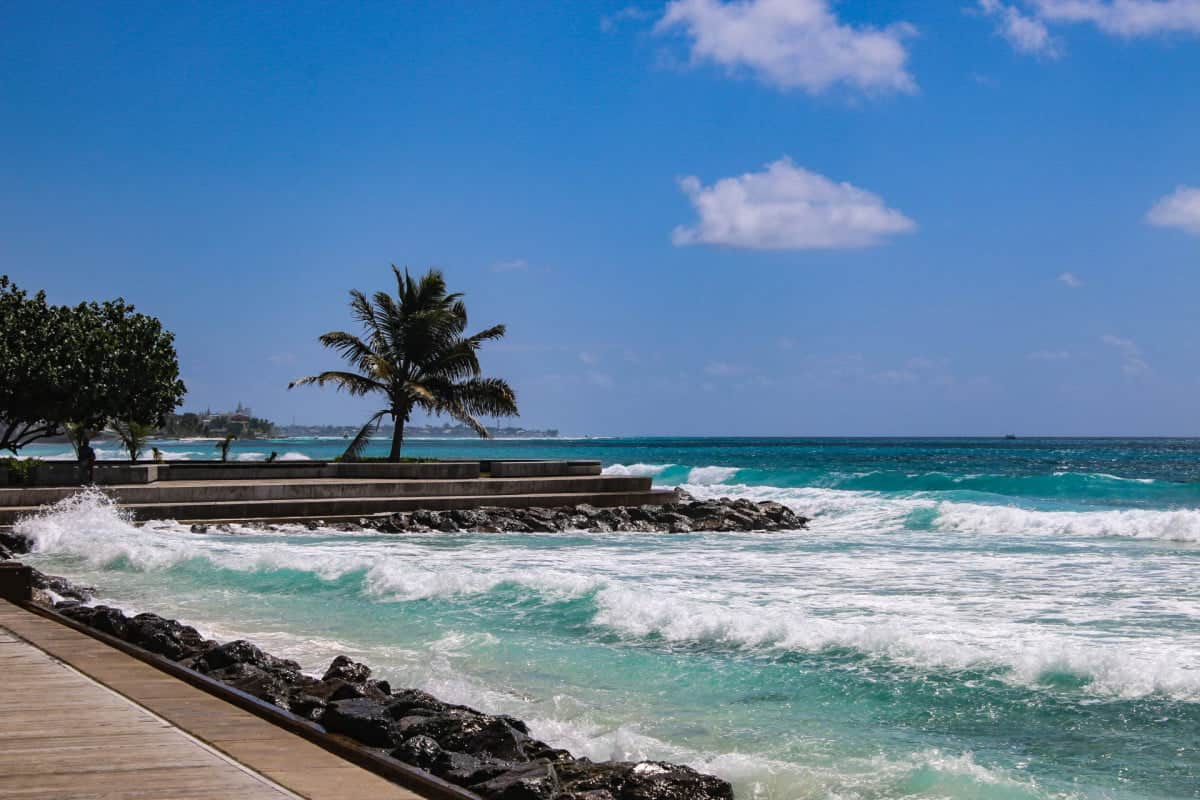
Barbados is renowned for its stunning coastline and crystal-clear waters. The island boasts an array of beaches, each with its own unique charm. From the lively and bustling beaches on the south coast to the tranquil and secluded coves on the west coast, there’s a beach for every mood.
Water activities are plentiful in Barbados, with opportunities for snorkeling, scuba diving, jet-skiing, and sailing. The warm Caribbean waters provide the perfect setting for water sports enthusiasts and beach lovers alike.

The island’s rich history and vibrant culture make it a captivating destination for travelers interested in immersing themselves in local traditions. Visitors can explore historic sites such as St. Nicholas Abbey, a beautifully preserved plantation house, or take a tour of Bridgetown, the capital city, which is a UNESCO World Heritage site.
The Bajan culture is reflected in the island’s music, dance, and cuisine. Don’t miss the chance to experience a lively calypso or reggae performance, indulge in delicious local dishes like flying fish and cou-cou, and mingle with friendly locals at one of the island’s many festivals and events.
For those seeking adventure and natural beauty, Barbados has plenty to offer. Hiking enthusiasts can explore the rugged terrain of the Scotland District or take a leisurely stroll through the Andromeda Botanic Gardens. Animal lovers can visit the Barbados Wildlife Reserve to see green monkeys and other exotic wildlife in their natural habitat.
The island also boasts underground caves, such as Harrison’s Cave, where visitors can marvel at stunning stalactites and stalagmites, and take an underground tram tour through the cavernous chambers.
Barbados is a tropical paradise that beckons travelers with its warm hospitality, breathtaking landscapes, and diverse range of experiences. Whether you’re seeking relaxation on the beach, cultural immersion, or thrilling adventures, Barbados has it all. With its sunny climate and welcoming atmosphere, it’s no wonder that Barbados is a beloved destination for travelers from around the world. Pack your bags and get ready to embark on an unforgettable journey to this Caribbean paradise!
A little bit of history
- Barbados is an island country in the Caribbean region.
- It was initially inhabited by the indigenous Arawak and Carib peoples.
- The island was first visited by the Portuguese explorer Pedro a Campos in 1536.
- In 1625, English settlers arrived and established the first permanent settlement.
- Barbados became a British colony in 1627 and remained under British rule for over 300 years.
- The island played a significant role in the Atlantic slave trade, with enslaved Africans being brought to work on sugar plantations.
- Barbados was a major producer of sugar and rum during the colonial period.
- The island experienced several uprisings and rebellions by enslaved people, including the Bussa Rebellion in 1816.
- In 1966, Barbados gained independence from Britain and became a sovereign nation within the Commonwealth.
- Since independence, Barbados has developed into a stable democracy with a diverse economy, including tourism, manufacturing, and offshore financial services.
Tokyo: City of Tradition and Innovation
When it comes to iconic and bustling cities, Tokyo, Japan undoubtedly takes the spotlight. This metropolis is a captivating blend of ancient traditions and cutting-edge technology, offering a unique experience to locals and visitors alike. In this blog post, we will delve into the wonders of Tokyo and explore why it should be at the top of your travel bucket list.
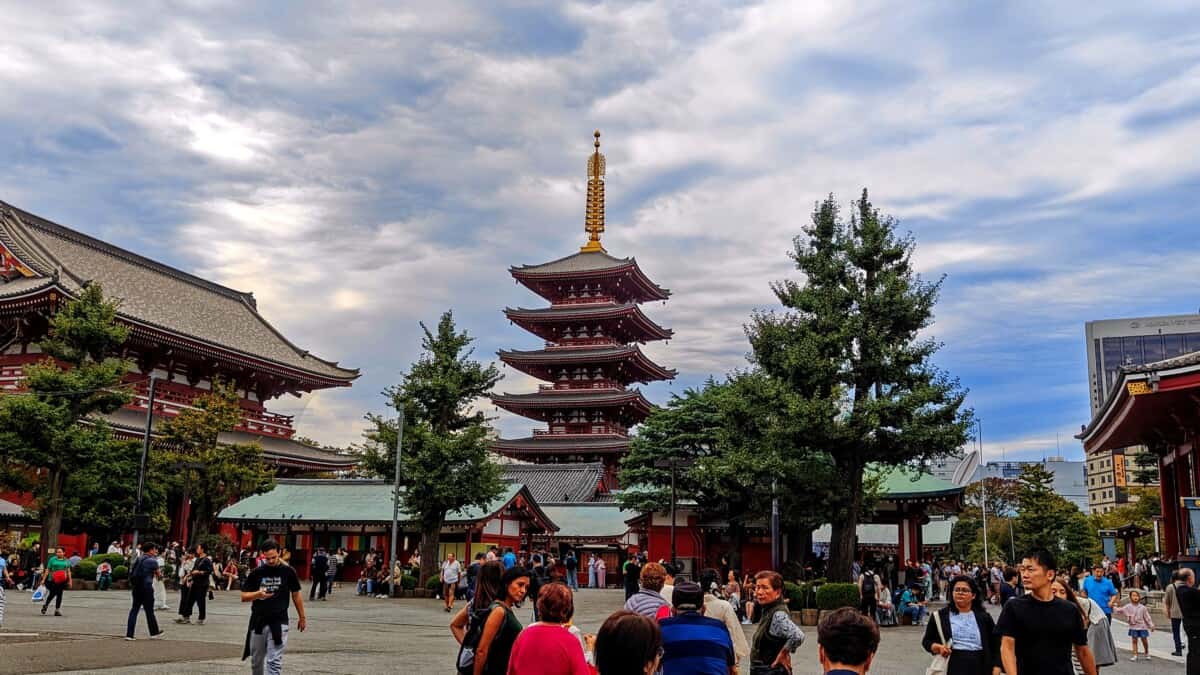
Tokyo is a city deeply rooted in its rich cultural heritage. From historic temples to traditional tea ceremonies, there are plenty of opportunities to immerse yourself in Japanese traditions. One must-visit location is the Sensō-ji Temple in Asakusa, one of Tokyo’s oldest and most significant Buddhist temples. Its vibrant atmosphere, with bustling market streets and stunning architecture, provides a glimpse into the city’s past.
For art enthusiasts, the Tokyo National Museum is a treasure trove of Japanese masterpieces. The museum showcases a vast collection of ancient artifacts, samurai armor, and exquisite artwork from various periods in Japanese history. It’s a fantastic opportunity to appreciate the craftsmanship and artistic prowess of the Japanese people.
While Tokyo embraces its cultural heritage, it also stands at the forefront of technological innovation. The cityscape is a mesmerizing blend of towering skyscrapers, neon lights, and futuristic architecture. A visit to the famous Shibuya Crossing is a must-do. It is one of the busiest intersections in the world, where thousands of pedestrians cross the road in perfect synchrony. The sheer energy and buzz of this iconic spot showcase Tokyo’s modernity.
Another technological marvel not to be missed is the Tokyo Skytree. As one of the tallest towers globally, it offers breathtaking panoramic views of the city. On a clear day, you can see Mt. Fuji in the distance, adding a touch of natural beauty to Tokyo’s urban landscape.
A trip to Tokyo would be incomplete without indulging in its culinary delights. The city boasts an incredible array of dining options, ranging from humble street food stalls to Michelin-starred restaurants. Sushi lovers will be in paradise as they savor the freshest and most exquisite sushi creations imaginable. Ramen shops are also aplenty, offering a variety of flavors and styles to satisfy any palate.

For those seeking a unique dining experience, Tokyo is home to numerous themed cafes and restaurants. From cat cafes to robot restaurants, these quirky establishments provide an unforgettable dining adventure that showcases Tokyo’s playful side.
Tokyo is synonymous with shopping, offering an unparalleled retail experience. The city is dotted with bustling shopping districts like Ginza and Shibuya, where you can find everything from high-end fashion brands to quirky anime merchandise. Don’t forget to explore Harajuku, known for its vibrant street fashion and trendy boutiques.
If you’re looking for electronics and gadgets, Akihabara is the place to be. This district is a haven for tech enthusiasts, with shops selling the latest gadgets, video games, and anime-related merchandise.
Tokyo truly has something for everyone. It seamlessly blends ancient traditions with modern innovation, creating a dynamic city unlike any other. Whether you’re captivated by its cultural heritage, fascinated by its technological marvels, or enticed by its culinary delights and shopping paradise, Tokyo is an experience that will leave a lasting impression. So pack your bags and get ready to embark on a journey through this vibrant city where tradition and innovation coexist harmoniously.
A little bit of history
- Tokyo was originally known as Edo and was a small fishing village in the 12th century.
- In 1603, Edo became the capital of Japan when the Tokugawa shogunate established its headquarters there.
- During the Edo period (1603-1868), Edo grew rapidly as a political, economic, and cultural center.
- In 1868, the Meiji Restoration took place, and Edo was renamed Tokyo, meaning “Eastern Capital.”
- Tokyo became the capital of modern Japan and experienced rapid industrialization and urbanization.
- In the early 20th century, Tokyo faced several challenges, including earthquakes, fires, and World War II bombings.
- After World War II, Tokyo played a crucial role in Japan’s post-war recovery and economic growth.
- The city hosted the 1964 Summer Olympics, which showcased its modern infrastructure and technological advancements.
- Tokyo continues to be a global city, known for its cutting-edge technology, vibrant culture, and bustling metropolis.
- In 2021, Tokyo hosted the Summer Olympics for the second time, making it the first Asian city to host the Games twice.
10 Tips for Travelling on the Cheap
- Plan in advance: Planning your trip well in advance allows you to take advantage of various cost-saving opportunities. Start by researching different destinations and comparing prices for flights, accommodations, and activities. Keep an eye out for early bird deals, promotional offers, and discounts. By booking early, you can secure better rates and availability, increasing your chances of finding affordable options.
- Travel during off-peak seasons: Traveling during off-peak seasons not only helps you avoid crowds but also allows you to save money. During these periods, airlines and hotels often offer lower prices to attract travelers. Consider shoulder seasons or weekdays when demand is lower. Research the destination’s peak travel periods and plan your trip accordingly to enjoy significant savings.
- Use budget airlines: Budget airlines are known for offering lower fares compared to full-service carriers. To get the best deals, be flexible with your travel dates and destinations. Keep in mind that budget airlines may have restrictions on baggage and additional charges for services like seat selection or in-flight meals. Read the terms and conditions carefully before booking to avoid any surprises.
- Consider alternative accommodations: Consider staying in alternative accommodations to save money while adding a unique touch to your travel experience. Hostels are a popular choice for budget travelers as they provide affordable dormitory-style rooms or private rooms at lower rates compared to hotels. Guesthouses, bed and breakfasts, or vacation rentals are also great options that can offer more space and amenities for a lower cost than traditional hotels.
- Cook your own meals: Eating out at restaurants for every meal can quickly drain your travel budget. Save money by cooking your own meals or preparing simple breakfasts and lunches in your accommodation. Look for accommodations with kitchen facilities or shared kitchens where you can prepare your own food. Explore local markets and supermarkets to buy fresh ingredients and try cooking local dishes, adding a cultural experience to your trip.
- Use public transportation: Public transportation is often a cost-effective way to get around in many destinations. Research the local transportation options, such as buses, trains, trams, or subways, and familiarize yourself with their routes and schedules. Public transportation not only saves you money but also allows you to experience the local way of commuting, interact with locals, and explore the city at your own pace.
- Research free or low-cost attractions: Many destinations offer free or low-cost attractions that provide engaging experiences without breaking the bank. Research the destination’s museums, parks, historical sites, and cultural events that offer free admission or discounted tickets. Take advantage of walking tours or self-guided tours to explore the city’s landmarks and neighborhoods without spending much.
- Walk or bike around: Walking or biking is not only a budget-friendly option but also a great way to immerse yourself in the destination’s atmosphere. Explore the city on foot, discovering hidden gems, local markets, and charming streets. If feasible, rent a bike and cycle around the city, allowing you to cover more ground while enjoying an active and eco-friendly mode of transportation.
- Use travel apps and websites: Utilize travel apps and websites that offer discounts, deals, and comparison tools for flights, accommodations, and activities. These platforms can help you find the best prices, read reviews from other travelers, and even provide exclusive offers. Sign up for newsletters or follow social media accounts of travel companies to stay updated on flash sales or limited-time promotions.
- Travel light: Packing light not only saves you money on baggage fees but also makes your journey more convenient and hassle-free. Choose versatile clothing items that can be mixed and matched for various outfits. Pack travel-sized toiletries instead of full-sized products. Consider doing laundry during your trip instead of packing excessive clothing. Traveling light allows you to be more flexible with transportation options, such as using carry-on luggage only or taking public transportation without worrying about excessive baggage.
Remember, traveling on a budget requires careful planning, flexibility, and resourcefulness. Researching your options, being open to alternative choices, and making conscious decisions about where you spend your money will help you make the most of your travel experience while keeping costs under control.
Puerto Vallarta: A Perfect Vacation Destination for Beach Lovers and Adventure Seekers
Are you craving a tropical getaway that combines stunning beaches, rich culture, and breathtaking natural beauty? Look no further than Puerto Vallarta, a vibrant coastal city nestled on Mexico’s Pacific coast.

With its picturesque landscapes, warm hospitality, and diverse attractions, Puerto Vallarta offers an unforgettable vacation experience for travelers of all ages and interests.
Puerto Vallarta boasts an abundance of natural wonders that will leave you in awe. From the pristine golden beaches to the lush mountains and verdant jungles, the city offers a diverse range of landscapes to explore. Take a stroll along the famous Malecon boardwalk, where you can enjoy panoramic views of the Pacific Ocean while immersing yourself in local art and culture. For adventure enthusiasts, a visit to the Sierra Madre Mountains is a must. Embark on a thrilling zip-lining expedition or go on a guided jungle tour to discover hidden waterfalls and exotic wildlife.
Beyond its natural beauty, Puerto Vallarta is steeped in rich culture and history. Explore the charming Old Town, also known as Zona Romantica, with its cobblestone streets and colorful colonial buildings. Visit the iconic Our Lady of Guadalupe Church, a symbol of Puerto Vallarta, and admire its stunning architecture. Don’t miss the chance to experience traditional Mexican cuisine at local restaurants, where you can savor mouthwatering dishes like ceviche, tacos al pastor, and chiles en nogada.

One of the main draws of Puerto Vallarta is its stunning beaches. Whether you’re seeking a tranquil oasis or a vibrant party scene, the city has a beach to suit every preference. Head to Playa de los Muertos, located in the heart of the Romantic Zone, for a lively beach atmosphere with an array of restaurants and bars. If you prefer a quieter ambiance, Playa Conchas Chinas is a hidden gem nestled between lush hillsides and crystal-clear waters. For water sports enthusiasts, Playa Las Animas offers opportunities for snorkeling, kayaking, and jet skiing.
While Puerto Vallarta itself offers an abundance of attractions, its proximity to other hidden gems makes it an even more appealing destination. Take a boat trip to the pristine Marietas Islands, home to secluded beaches and vibrant marine life. The nearby fishing village of Sayulita is perfect for surf enthusiasts, with its laid-back atmosphere and world-class waves. You can also embark on a day trip to the charming town of San Sebastian del Oeste, where you can explore its colonial architecture and taste locally produced coffee.
When the sun sets in Puerto Vallarta, the city comes alive with vibrant nightlife and entertainment options. Head to the Malecon boardwalk to enjoy live music performances, street vendors selling delicious snacks, and lively bars offering refreshing cocktails. If you’re looking for a more upscale experience, Marina Vallarta is home to upscale restaurants, trendy nightclubs, and a bustling casino.
When planning your trip to Puerto Vallarta, consider the best time to visit. The city enjoys warm tropical weather year-round, but November to April is considered the peak tourist season with pleasant temperatures and minimal rainfall. To make the most of your stay, choose from a variety of accommodation options ranging from luxurious resorts to budget-friendly hotels and charming boutique guesthouses.
Puerto Vallarta offers an enchanting blend of natural beauty, cultural richness, and vibrant entertainment. Whether you’re seeking relaxation on pristine beaches, an adventure in the mountains, or an immersive cultural experience, this coastal gem has it all. Start planning your dream vacation to Puerto Vallarta today and get ready for an unforgettable journey filled with memories that will last a lifetime.
A little bit of history
- Puerto Vallarta is a city located on the Pacific coast of Mexico.
- It was founded in 1851 as a fishing village and was initially known as Las Peñas.
- In the early 20th century, Puerto Vallarta remained a small town with a population of around 1,500 people.
- The city gained international recognition in the 1960s when it was chosen as the filming location for the movie “The Night of the Iguana,” starring Richard Burton and Ava Gardner.
- The movie’s production put Puerto Vallarta on the map as a tourist destination and attracted visitors from around the world.
- The construction of the Puerto Vallarta International Airport in 1962 further facilitated tourism to the area.
- Over the years, Puerto Vallarta has experienced significant growth and development, with modern infrastructure and a thriving tourism industry.
- The city is known for its beautiful beaches, vibrant nightlife, and charming Old Town, which features cobblestone streets and colonial architecture.
- Puerto Vallarta also offers various outdoor activities, such as water sports, fishing, and eco-tours.
- Today, it is a popular vacation spot for both domestic and international tourists, attracting millions of visitors each year.
- Working While Traveling Solo
- Getting to Know Niagara Falls
- Discovering the Grandeur of Versailles Palace
- A Solo Traveler’s Journey
- Embracing Solitude While Traveling
- My Top 10 Favorite Cities in the World
about:blank
Krabi: A Perfect Blend of Travel and Beauty
Krabi, a tropical paradise nestled in southern Thailand, is a destination that captivates the hearts of travelers from around the world.

Its pristine beaches, crystal-clear turquoise waters, lush greenery, and towering limestone cliffs create a picturesque landscape that leaves visitors in awe. Beyond its natural beauty, Krabi also offers a wealth of opportunities for adventure, relaxation, and cultural exploration. In this blog post, we will delve into the wonders of Krabi, focusing on its travel attractions while also highlighting the importance of SEO for businesses in the tourism industry.
Krabi is renowned for its stunning beaches, and Railay Beach is undoubtedly one of the most popular. Accessible only by boat due to the surrounding cliffs, Railay Beach boasts white powdery sand and crystal-clear waters, making it a haven for sunbathers, swimmers, and rock climbers. Another must-visit beach is Ao Nang, offering a vibrant atmosphere with numerous shops, restaurants, and bars.

For those seeking adventure, a visit to Phi Phi Islands is a must. These idyllic islands, made famous by the movie “The Beach,” offer incredible snorkeling and diving experiences. Explore Maya Bay’s tranquil turquoise waters or hike to the Phi Phi Viewpoint for breathtaking panoramic views.
Krabi is also home to several stunning national parks. Pay a visit to Khao Phanom Bencha National Park, where you can discover majestic waterfalls and immerse yourself in the lush rainforest. Another gem is Than Bok Khorani National Park, known for its emerald pools and limestone caves.
As the tourism industry continues to grow, having a strong online presence is essential for businesses in Krabi. Search Engine Optimization (SEO) plays a vital role in driving organic traffic to websites and increasing visibility in search engine results. By optimizing their websites with relevant keywords and quality content, businesses can attract more visitors and potential customers.
For travel agencies and tour operators in Krabi, implementing effective SEO strategies can significantly impact their online visibility. This includes optimizing website content with targeted keywords such as “Krabi travel” or “best things to do in Krabi.” Creating informative blog posts about Krabi’s attractions, local culture, and travel tips can also help engage readers and boost SEO efforts.
Additionally, businesses should focus on building high-quality backlinks from reputable travel websites and directories. These links not only drive referral traffic but also enhance the website’s authority in search engine rankings.
Krabi, Thailand offers an enchanting blend of natural beauty, adventure, and cultural experiences. From its stunning beaches to its lush national parks, Krabi provides endless opportunities for travelers seeking relaxation or excitement. Moreover, businesses in the tourism industry can leverage the power of SEO to enhance their online presence and attract more visitors to this tropical paradise.
So pack your bags and embark on an unforgettable journey to Krabi, where every moment is filled with awe-inspiring wonders and endless possibilities for adventure!
A little bit of history
- Krabi is a province in southern Thailand, located on the Andaman Sea.
- It was originally inhabited by indigenous people known as the Chao Leh or Sea Gypsies.
- The area has a rich history dating back thousands of years, with evidence of human settlements found in caves and rock shelters.
- Krabi was an important trading port during the ancient times, serving as a gateway for merchants from India, China, and the Arab world.
- The province has been influenced by various cultures, including Indian, Chinese, and Muslim.
- In the 19th century, Krabi was under the control of the Kingdom of Ligor (now Nakhon Si Thammarat).
- The town of Krabi was established in 1872 when King Chulalongkorn (Rama V) visited the area and recognized its potential.
- During World War II, Krabi was occupied by the Japanese army.
- In the 1970s, Krabi started to gain popularity among backpackers and became a popular tourist destination.
- Today, Krabi is known for its stunning natural beauty, including limestone cliffs, clear turquoise waters, and pristine beaches. It attracts tourists from around the world for activities such as rock climbing, snorkeling, and island hopping.
Kyoto, Japan: A Traveler’s Paradise
Known for its rich history, traditional culture, and stunning natural landscapes, Kyoto is a must-visit destination for travelers around the world. In this blog post, we will highlight the top attractions and provide useful travel tips to make your Kyoto adventure truly unforgettable.
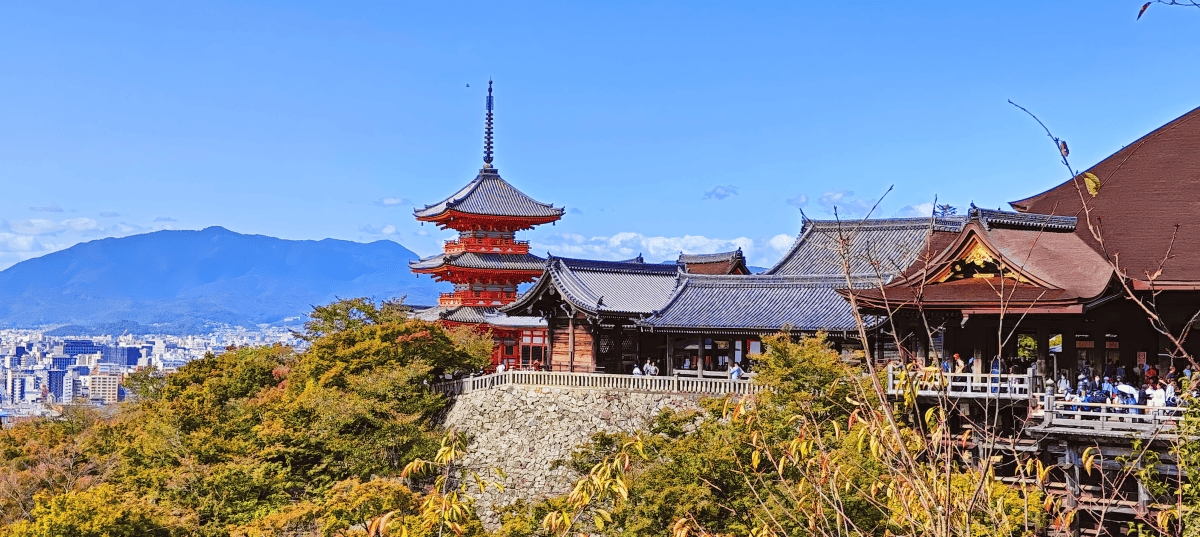
Kyoto is often referred to as the “City of a Thousand Temples,” and for good reason. The city is home to numerous UNESCO World Heritage Sites, each with its own unique architectural style and historical significance. Don’t miss the iconic Kinkaku-ji (Golden Pavilion), a Zen Buddhist temple covered in gold leaf, or the serene Kiyomizu-dera, which offers breathtaking views of the city from its wooden terrace.
To experience the traditional atmosphere of Kyoto, take a leisurely stroll through the city’s charming historic districts. Gion is particularly famous for its preserved wooden machiya houses and geisha culture. You might even catch a glimpse of a geisha or maiko (apprentice geisha) walking along the narrow streets. Other districts worth exploring include Higashiyama and Arashiyama, where you can find picturesque temples, bamboo groves, and scenic gardens.

Kyoto boasts some of the most exquisite Japanese gardens in the world. These meticulously designed landscapes offer a peaceful retreat from the bustling city. Visit the enchanting Ryoan-ji Temple’s rock garden, known for its minimalist design and carefully placed rocks. The sprawling gardens of the Imperial Palace and the tranquil Katsura Imperial Villa are also worth a visit to witness the harmony between nature and architecture.
To make the most of your trip to Kyoto, consider the seasons and plan accordingly. The cherry blossom season in spring (late March to early April) paints the city in stunning shades of pink and attracts crowds from all over the world. Autumn (October to November) is equally mesmerizing when vibrant foliage transforms the city into a colorful wonderland. Keep in mind that these peak seasons can be crowded, so book accommodations and attractions in advance.
Kyoto has an efficient public transportation system that includes buses, trains, and subway lines. Consider purchasing a transportation card, such as the ICOCA card, to easily navigate the city and save on transportation costs. Bicycles are also a popular mode of transportation in Kyoto, allowing you to explore at your own pace while enjoying the scenic streets.
No trip to Kyoto is complete without savoring its renowned culinary delights. Indulge in a traditional kaiseki meal, a multi-course feast that showcases seasonal ingredients and exquisite presentation. Don’t miss trying matcha (powdered green tea) and wagashi (traditional Japanese sweets) while exploring the tea houses in Kyoto. For a unique experience, visit Nishiki Market, also known as “Kyoto’s Kitchen,” where you can sample a variety of local street food and fresh produce.
Kyoto offers an enchanting blend of history, culture, and natural beauty that captivates every traveler’s heart. With its ancient temples, historic districts, and serene gardens, this Japanese gem will transport you to a bygone era. Whether you’re seeking spiritual enlightenment or simply immersing yourself in the local traditions, Kyoto promises an unforgettable travel experience. Start planning your journey today and get ready to create lifelong memories in this magical city!
A little bit of history
- Kyoto is a city located in the Kansai region of Japan.
- It served as the capital of Japan from 794 to 1868, during the Heian Period.
- The city was originally called “Heian-kyo” (Capital of Peace and Tranquility) when it was established as the new capital of Japan by Emperor Kammu.
- Kyoto is known for its rich cultural and historical heritage, with numerous temples, shrines, and traditional wooden houses.
- The city was largely spared from destruction during World War II, allowing many historical structures to be preserved.
- Kyoto is famous for its beautiful cherry blossoms, which attract tourists from around the world during springtime.
- The city is home to several UNESCO World Heritage Sites, including Kiyomizu-dera Temple, Kinkaku-ji (Golden Pavilion), and the historic monuments of ancient Kyoto.
- Kyoto was the birthplace of traditional Japanese arts such as tea ceremony, flower arrangement (ikebana), and Noh theater.
- The Gion district in Kyoto is renowned for its geisha culture and traditional entertainment.
- Today, Kyoto is a modern city with a mix of old and new, attracting visitors with its historical charm and cultural significance.
Kobe: Exploring the Charm
Japan is a country known for its rich history, stunning landscapes, and unique cultural experiences. While many travelers flock to popular destinations like Tokyo and Kyoto, there is a hidden gem that should not be overlooked – Kobe.
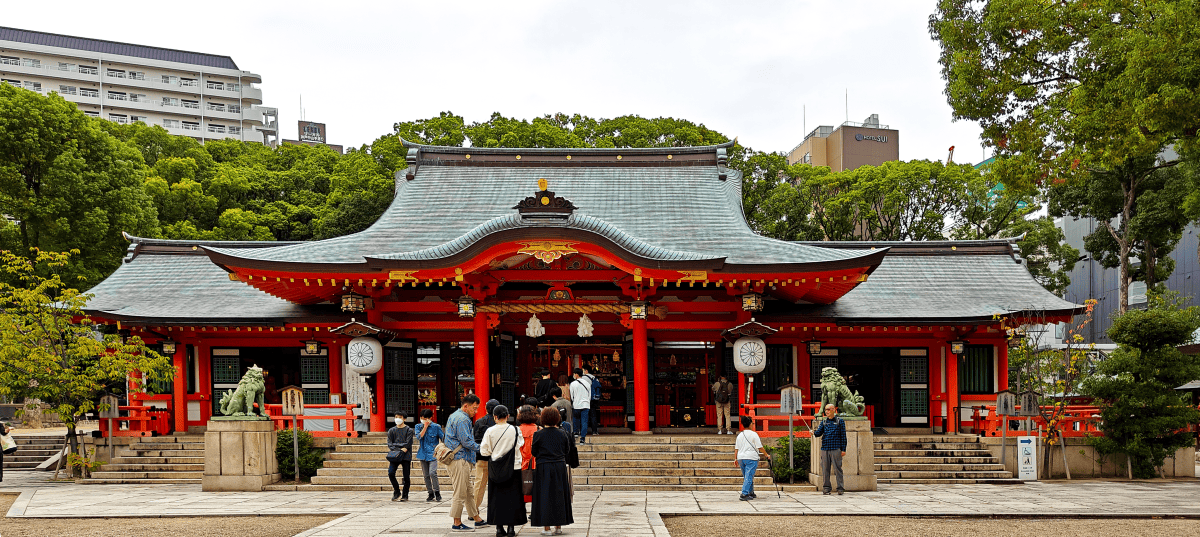
Located in the Hyogo Prefecture, Kobe offers a perfect blend of tradition and modernity, scenic beauty, and culinary delights. In this blog post, we will take you on a virtual tour of Kobe and explore the reasons why it should be on every traveler’s itinerary.
Kobe is a city that seamlessly blends the old and the new. As you walk through its streets, you will be greeted by a mix of modern architecture and traditional Japanese buildings. The city’s skyline is dominated by towering skyscrapers, but nestled among them are historic sites such as Kitano-cho, a district famous for its preserved Western-style houses. This unique combination of old and new creates a captivating atmosphere that is both charming and vibrant.
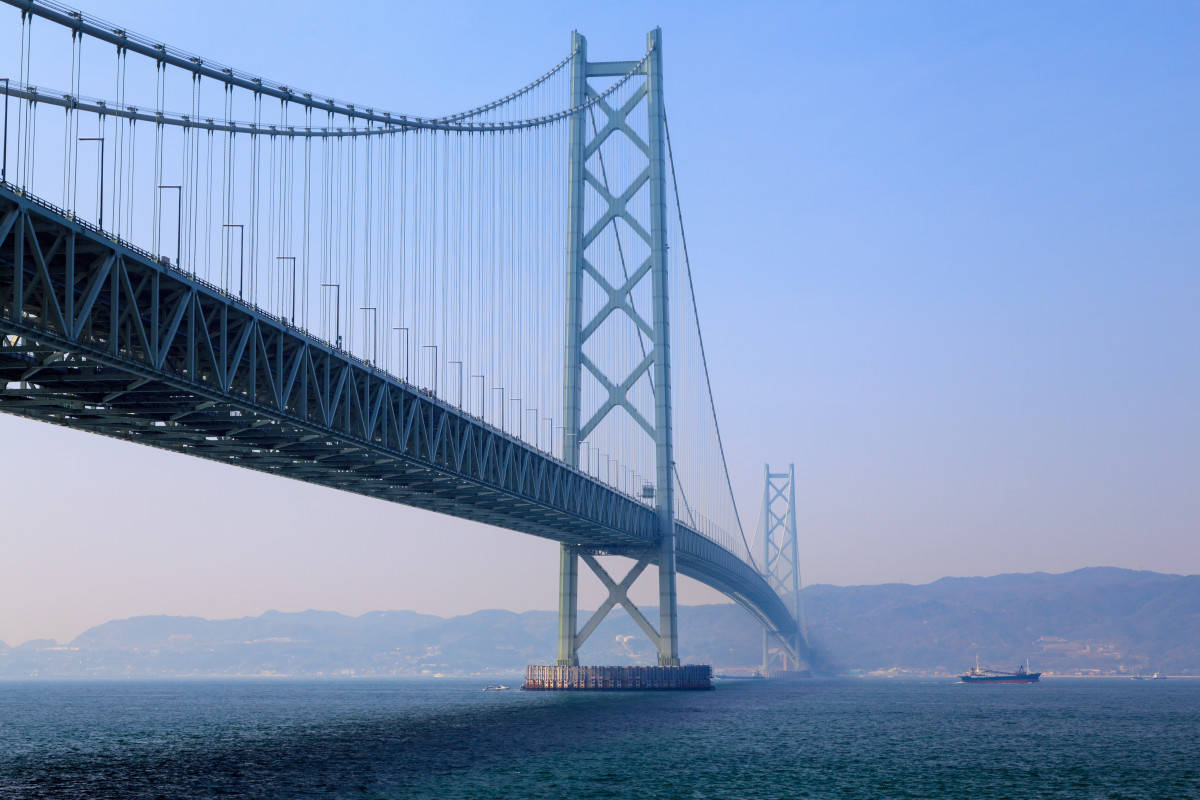
One of the highlights of visiting Kobe is its breathtaking natural beauty. The city is situated between the Rokko mountain range and the beautiful coastline of the Seto Inland Sea. Take a cable car ride up Mount Rokko for panoramic views of the city and the surrounding landscape. On a clear day, you can even catch a glimpse of Mount Fuji in the distance. For nature lovers, a visit to Nunobiki Herb Garden is a must. This picturesque garden offers a tranquil escape from the bustling city and is home to a wide variety of aromatic herbs and flowers.
No trip to Kobe would be complete without indulging in its world-famous cuisine. Kobe beef, known for its exceptional marbling and tenderness, is a must-try for meat lovers. You can savor this delicacy at one of the many teppanyaki restaurants in the city. Another local specialty is sake, Japan’s traditional rice wine. Visit a sake brewery to learn about the brewing process and sample different varieties of this beloved beverage. Don’t forget to pair it with some delicious local dishes like sushi and sashimi for a truly authentic dining experience.
Kobe is a city that celebrates its cultural heritage with pride. The annual Kobe Matsuri, or Kobe Festival, is a vibrant event that showcases traditional music, dance, and performances. During this festival, the streets come alive with colorful parades and lively festivities. If you’re interested in history, a visit to Kobe City Museum is highly recommended. Here, you can learn about the city’s past through interactive exhibits and artifacts.
Last but not least, Kobe is known for its warm and welcoming hospitality. The locals are friendly and always ready to assist visitors with a smile. Whether you need directions or recommendations for the best places to eat, you can count on the people of Kobe to make your stay memorable.
Kobe offers a unique travel experience that combines history, natural beauty, culinary delights, cultural festivities, and warm hospitality. Whether you’re an adventure seeker, a food enthusiast, or a culture lover, this charming city has something for everyone. So why not add Kobe to your travel bucket list and discover all that it has to offer? You won’t be disappointed!
A little bit of history
- Kobe is a city located in Hyogo Prefecture, Japan.
- It was founded on April 1, 1889.
- The city’s name “Kobe” comes from “kanbe,” an ancient name for the city.
- Kobe is known for its international port and has been an important trading center for centuries.
- In January 1995, Kobe was hit by a devastating earthquake known as the Great Hanshin-Awaji Earthquake. The earthquake resulted in significant damage and loss of life.
- Following the earthquake, the city underwent a remarkable recovery and reconstruction process.
- Today, Kobe is a vibrant and cosmopolitan city, known for its blend of modern and traditional architecture, scenic views of Mount Rokko, and delicious cuisine, including the famous Kobe beef.
- The city is also home to various cultural attractions, such as the Kobe Port Tower, Meriken Park, Kitano Ijinkan (foreign residences), and the Kobe City Museum.
Hiroshima: A Captivating Travel Destination
Hiroshima, a city in Japan’s Chugoku region, is a destination that draws visitors from all over the world.
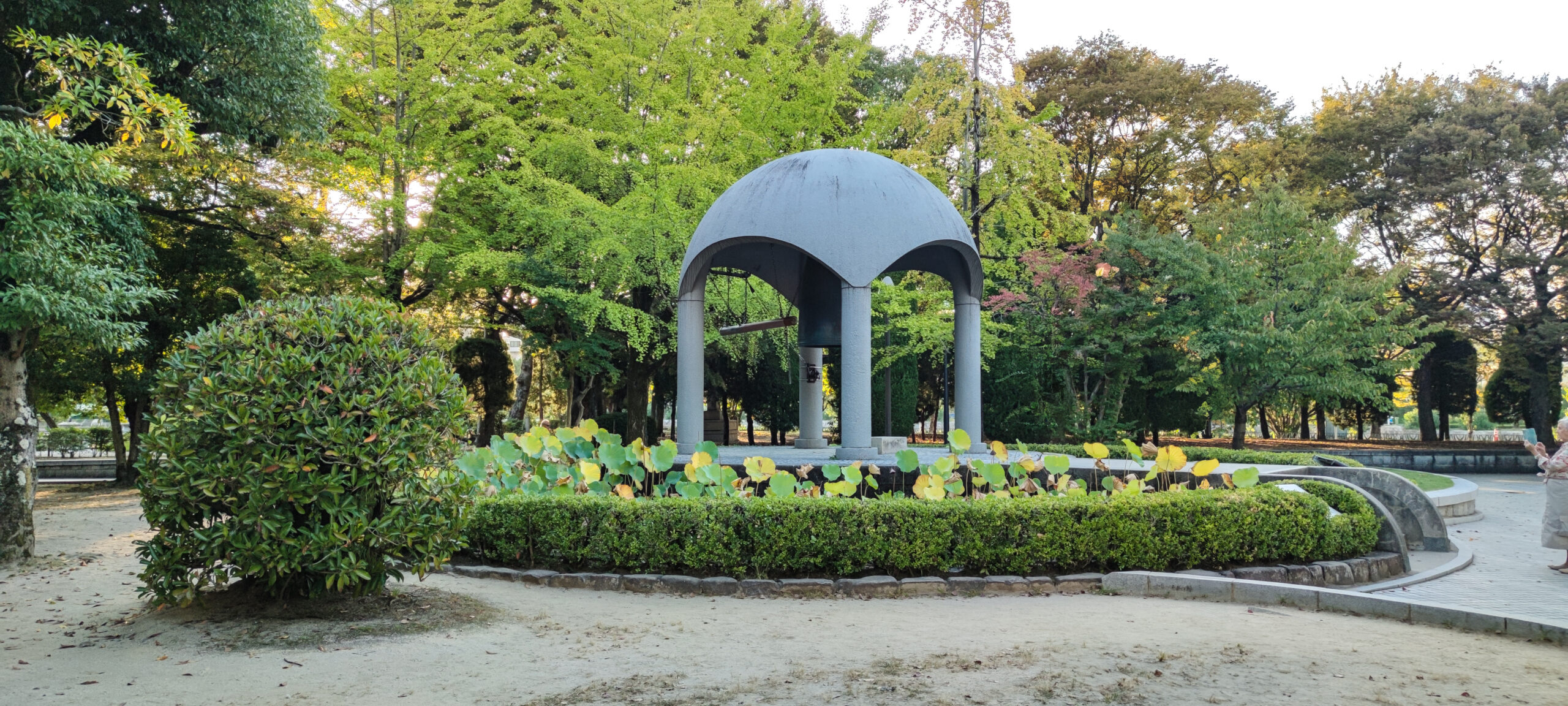
While its tragic history is well-known, Hiroshima has risen from the ashes to become a symbol of resilience and peace. Today, it offers a captivating blend of historical sites, natural beauty, and vibrant culture. In this blog post, we will delve into the reasons why Hiroshima should be on every traveler’s bucket list.
No visit to Hiroshima is complete without exploring its poignant history. The city was devastated by the atomic bomb during World War II, and the Peace Memorial Park stands as a solemn reminder of the tragedy. The Hiroshima Peace Memorial Museum provides a comprehensive account of the events leading up to and following the bombing, offering visitors a chance to reflect on the consequences of war and the importance of peace.
One of Hiroshima’s most iconic landmarks is Hiroshima Castle. Originally built in the 16th century, the castle was destroyed during the atomic bombing and meticulously reconstructed in the 1950s. Today, it serves as a museum showcasing artifacts from the feudal era. Visitors can explore the castle’s impressive architecture, climb to the top for panoramic views of the city, and immerse themselves in Japan’s rich history.
Just a short ferry ride from Hiroshima lies Miyajima Island, a place of breathtaking beauty. Known for its iconic floating torii gate, which appears to be floating on water during high tide, Miyajima is a must-visit destination. Take a leisurely stroll along Itsukushima Shrine, a UNESCO World Heritage site, and marvel at the stunning scenery. Don’t miss the opportunity to try some local delicacies such as grilled oysters and Momiji manju, a sweet pastry shaped like a maple leaf.

Hiroshima is renowned for its delectable cuisine, with local specialties that are sure to tantalize your taste buds. Okonomiyaki, a savory pancake filled with various ingredients such as cabbage, noodles, and pork, is a must-try dish. Head to Okonomimura, a multi-story building dedicated to okonomiyaki restaurants, and savor this Hiroshima favorite. Additionally, Hiroshima-style tsukemen (dipping noodles) and local sake are also worth exploring for food enthusiasts.
Apart from its historical attractions, Hiroshima boasts stunning natural landscapes that will leave you in awe. Itsukushima Shrine on Miyajima Island is not only an architectural wonder but also surrounded by picturesque forests and mountains. Take a scenic hike up Mount Misen for breathtaking views of the Seto Inland Sea and beyond.
For those seeking tranquility, a visit to Shukkeien Garden is highly recommended. This traditional Japanese garden features meticulously landscaped ponds, tea houses, and walking paths that showcase the beauty of each season. Take a moment to relax and immerse yourself in the serenity that Shukkeien Garden exudes.
Hiroshima’s journey from tragedy to triumph is nothing short of inspiring. This vibrant city offers visitors a unique blend of history, culture, and natural beauty. Whether you are exploring its poignant past at the Peace Memorial Park or indulging in local delicacies at Okonomimura, Hiroshima will leave an indelible mark on your travel memories. So pack your bags and embark on an unforgettable journey to this captivating destination.
Note: Please be aware of any travel advisories or restrictions before planning your trip to Hiroshima.
A little bit of history
- Hiroshima is a city located in southwestern Japan.
- On August 6, 1945, Hiroshima became the first city in history to be targeted by a nuclear weapon during World War II.
- The United States dropped an atomic bomb named “Little Boy” on Hiroshima, resulting in the deaths of approximately 140,000 people.
- The bomb caused immense destruction, leveling buildings and leaving a vast area of the city in ruins.
- The bombing of Hiroshima played a significant role in Japan’s surrender and the end of World War II.
- The city has since been rebuilt and serves as a symbol of peace and a reminder of the devastating consequences of nuclear weapons.
- The Hiroshima Peace Memorial Park and the Atomic Bomb Dome are important landmarks and memorials in the city.
- Hiroshima is now a thriving city with a population of over one million people and is known for its cultural heritage and beautiful natural surroundings.
